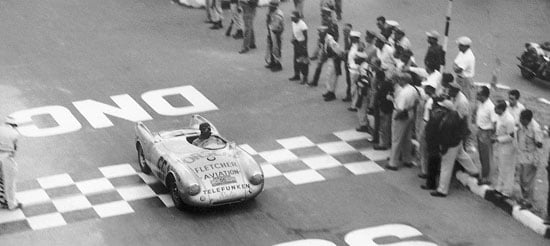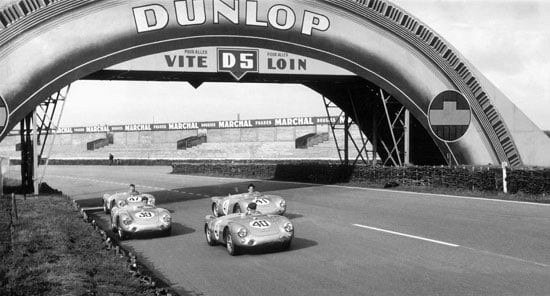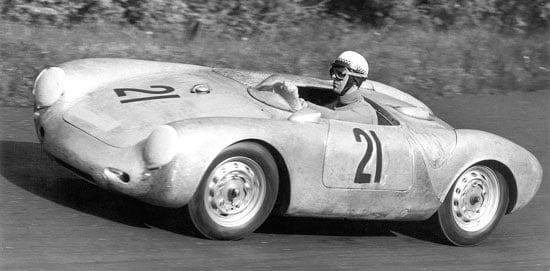
Porsche presented the 550 Spyder to the public for the first time at the Paris Motor Show in October 1953. This fabulous two-seater was the first sports car from Stuttgart-Zuffenhausen developed especially for motorsport.
Weighing just 550 kilos or 1213 lb, the lightweight Spyder was destined to score numerous wins on racing circuits the world over and in road races so popular at the time. A particular highlight enthusiasts still remember to this very day is the 1954 Carrera Panamericana, Hans Herrmann finishing third overall behind two much bigger and more powerful sports cars, thus bringing home victory in his class in this fifth and last edition of the toughest road race in the world. This outstanding success was to be followed by a long list of further victories and successful entries in motorsport by both the works team and a number of private customer teams.
Developing the 550 Spyder in early 1953, Porsche engineer Wilhelm Hild followed the example of a previous Glöckler-Porsche: Like this predecessor, the 550 Spyder featured a flat welded tubular frame, only the subsequent 550 A being upgraded by a “genuine” spaceframe. And contrary to common belief, the “550” model designation was not derived from the weight of the car. Rather, this was the 550th construction by Porsche.

The engine featured in the first two 550 chassis came from the Porsche 356. But it was not long until, in summer 1953, the new racing car received the extra muscle of 110 bhp from 1498 cc delivered by Dr. Ernst Fuhrmann’s four camshaft engine initially fitted for test purposes. Indeed, this outstanding power unit made a significant contribution to Porsche’s success in motor racing until well into the ‘60s. Hans Herrmann’s spectacular performance in the 1954 Carrera Panamericana in Mexico remains a genuine highlight in the history of Porsche to this very day: The first result of this success was the introduction of the “Carrera” name for all cars featuring the Fuhrmann power unit as a token of recognition bearing testimony to this outstanding race. Accordingly, Porsche 356 models with the four-camshaft power unit can be clearly distinguished by the name “Carrera” on the engine compartment lid. The Porsche 911, in turn, bore this name for the first time in 1972 when the Company introduced the Carrera RS.
And today the heritage of this lightweight racer lives on in Porsche’s new high-performance sports car, the Carrera GT.

Text & Photos: Porsche



